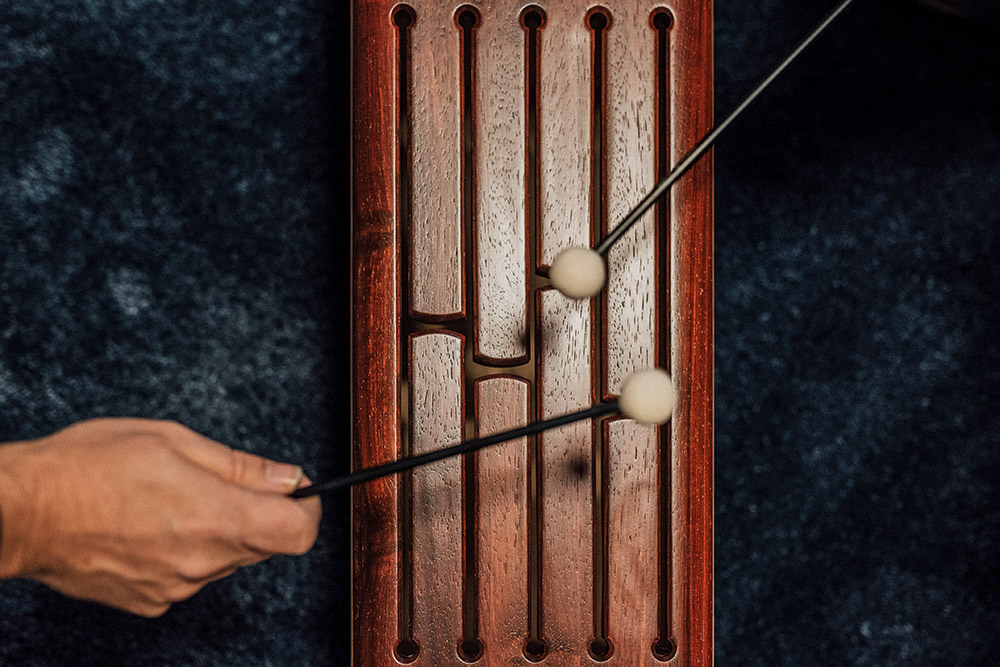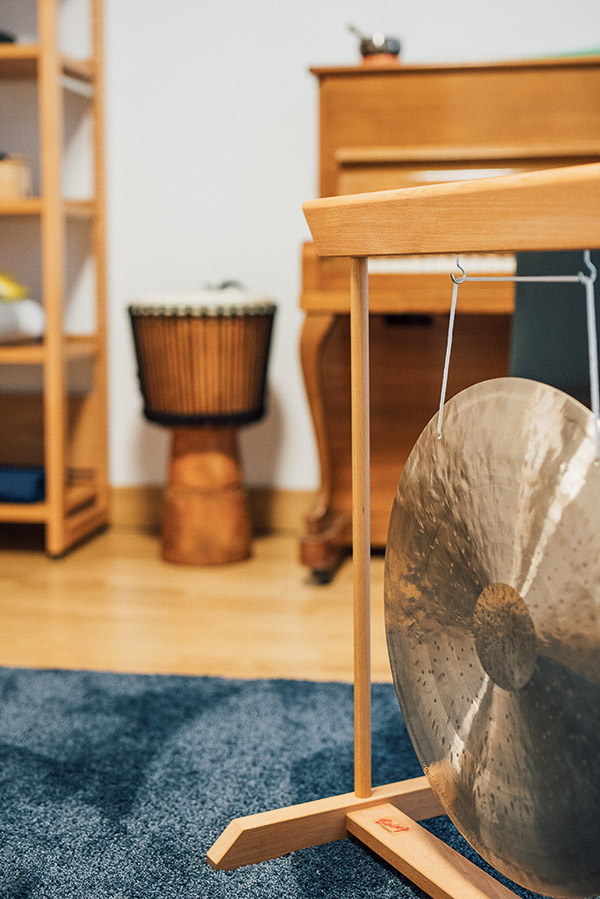“I’m anxious about…” It’s a feeling everybody knows, one with which we repeatedly have to deal—be it in the form of a diffuse foreboding or a concrete threat. But when anxiety plays a central role in a person’s life, it may amount to what’s defined clinically as an anxiety disorder—and for the treatment of such disorders, music therapy has developed effective methods and approaches. Thomas Stegemann, head of the mdw’s Department of Music Therapy, explains what makes music therapy effective in combating anxiety disorders.

“Anxiety is actually very useful, and it’s one of our basic, innate emotions. It enables us to better assess situations,” says Thomas Stegemann to emphasise anxiety’s important function. Over the course of a child’s development, that child will experience certain anxieties at certain ages. A baby, for example, gets anxious around strangers for the first time when it reaches that point in its development where it has already learned to distinguish clearly between familiar and unfamiliar people. Later on, but still during early childhood, this is joined by a fear of certain animals or natural events such as thunderstorms, and when children go to school, they worry about academic failure and about performing poorly in comparison to others.

An anxiety disorder, however, can be assumed to exist when such anxieties are felt over an extended period of time, arising in inappropriate situations and thus putting massive limitations on the life of the affected person, destroying their ability to participate at a sufficient level—or even at all—in everyday life. [This is described in greater detail in the article by Ulrike Demal—Ed.] Furthermore, such limitations produce anxiety about anxiety as such. “Anxiety disorders are among the most common disorders observed during childhood and adolescence,” says department head Stegemann, who is also a medical doctor specialised in child and adolescent psychiatry. “These frequently manifest themselves in anxiety at school or in a fear of school itself, with children ending up unwilling and unable to even go there.” Anxiety disorders that go untreated are taken along into adulthood, where they’re frequently joined by addictions and other psychological disorders such as depression.
This makes it all the more important to know that there are effective treatment methods—including approaches based on music therapy. Thomas Stegemann explains the methods that music therapists use here by referring to the case of a girl who suffered from emetophobia (the fear of vomiting), for which reason she’d become unable to attend school. While she actually had vomited at school once, this fact alone wasn’t enough to explain why she’d became afraid of going there. In their music therapy sessions together, Thomas Stegemann worked with this girl to find ways in which she could lend expression to her anxiety. She eventually put together her own “scary music” and began to enjoy making loud, creepy sounds. “Music therapy’s effect lies in learning to deal actively with anxiety, which provides protection when confronting it,” explains the expert. Over the course of her therapy, it came out that the girl didn’t want to go to school anymore because she didn’t want to leave her mother alone—and that shortly before the girl’s emetophobia developed, her mother had suffered a mild stroke. So this anxiety disorder was actually rooted in the thought of having to abandon her weakened mother.
By creating their own music, using instruments, and improvising—sometimes together with their music therapists—music therapy clients experience one possible way of rendering their (often diffuse and hence omnipotent-seeming) anxiety graspable and capable of being processed, thus regaining control over the situation. Their feeling of powerlessness is thus countered by active doing in the form of music-making and trying out instruments. And music therapists, in turn, build their relationships with their clients by reacting musically to their music. Using instruments enables affected individuals to give their anxiety its own sound—a sound they can shape and influence. And the act of doing so by themselves helps to enhance music therapy clients’ self-awareness.
In another form of music therapy, known as receptive music therapy, clients bring their favourite music—music that has a positive effect on them—along to their therapy sessions. And quite generally, music—including music played live by the therapist—is employed in connection with relaxation exercises.
What makes music such a good therapeutic tool? “Music acts via our sense of hearing, which we use as a detector of danger, as an alarm. Evolutionarily speaking, our sense of hearing is designed to be able to recognise and categorise threats,” explains Thomas Stegemann. Music, on the other hand, relaxes the brain’s “fear centre” while simultaneously activating its reward system. “This is why whistling in a dark forest can banish fear,” says Thomas Stegemann to visualise the concept. Singing and humming lullabies has the same calming effect on babies and small children. And just what actually happens in the brain while listening and/or playing was examined by Thomas Stegemann in his most recent book, Was MusiktherapeutInnen über das Gehirn wissen sollten [What Music Therapists Should Know about the Brain].
By virtue of its ability to resolve anxieties and fear, music is an ideal medium with which individuals affected by anxiety disorders can approach their anxieties and thus improve their ability to deal with them. Music counters anxiety’s overwhelming power with something audible that has the ability to ultimately transform anxiety into courage.

